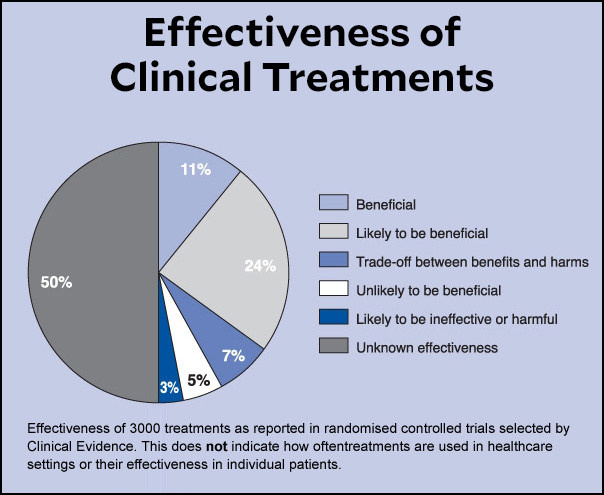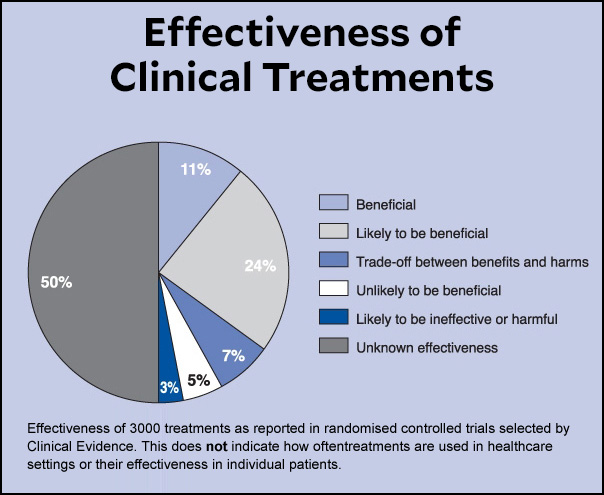
Austin Frakt highlights this chart from a 2013 special issue of the British Medical Journal:

OK fine, how about some examples?
There are countless other examples of common treatments and medical advice provided without good evidence: magnesium supplements for leg cramps; oxygen therapy for acute myocardial infarction; IV saline for certain kidney disease patients; the avoidance of peanuts to prevent allergies in children; many knee and spine operations; tight blood sugar control in critically ill patients; clear liquid diets before colonoscopies; bed rest to prevent preterm birth; the prescribing of unnecessary medications, to list just a few. In some of these cases, there is even evidence of harm.
Hmmm. My doctor told me to take magnesium supplements for leg cramps. Maybe I should save myself a few bucks and stop.















